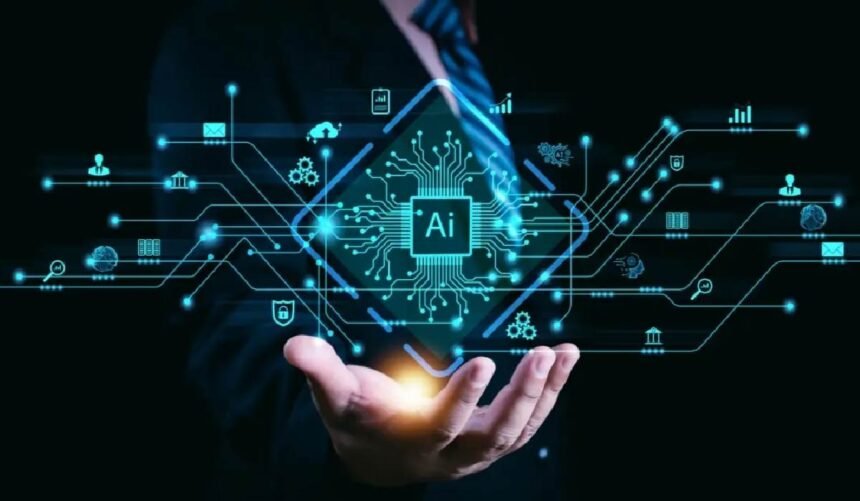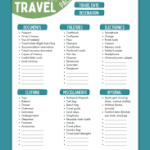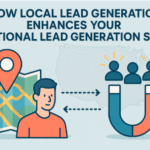The rise of Artificial Intelligence (AI) has completely reshaped how businesses identify, qualify, and nurture potential clients.
Instead of relying on spreadsheets and cold calls, marketers now use AI-driven systems that analyze thousands of data points—like behavior, engagement, and purchase intent—to predict which leads are most likely to convert.
What AI-Driven B2B Sales Lead Generation Really Means
Understanding the Role of AI in Lead Generation
AI transforms B2B marketing by replacing manual lead research with smart automation. It collects and interprets data from multiple channels—social media, websites, emails, and CRMs—to predict which prospects are worth pursuing.
Machine learning models refine this process over time, learning from each campaign to improve targeting precision and conversion likelihood. The more data fed into these systems, the more accurate they become.
The Shift From Manual Prospecting to Predictive Insights
Traditional B2B Sales lead generation often relied on static contact lists and outdated data. AI eliminates that inefficiency. By analyzing real-time behaviors, such as a prospect’s engagement with a LinkedIn post or website content, AI predicts buying intent.
This proactive approach allows sales teams to reach leads at the perfect moment—before competitors do.
Why Predictability Is the New Competitive Edge
A predictable pipeline means you know how many leads, how fast they’ll move, and how much revenue they’ll likely generate.
AI tools bring clarity to these numbers through precise analytics and historical modeling, allowing marketers to forecast outcomes and allocate resources more effectively.
As Gartner notes, AI-driven forecasting can improve pipeline accuracy by up to 40%, making sales operations more reliable and data-backed.
Challenges Businesses Face in B2B Lead Generation
Unqualified Leads and Inconsistent Data
Without AI, teams often waste resources chasing unqualified or duplicate leads. Poor data hygiene causes gaps in the funnel, leading to low conversion rates.
AI systems combat this by continuously cleansing and enriching databases with verified information from platforms like Clearbit and ZoomInfo.
Slow Lead Response Time
In traditional setups, leads can go cold before a rep even reaches out. AI-powered automation fixes this by triggering instant engagement sequences—from personalized emails to chatbot follow-ups—keeping prospects warm.
Siloed Marketing and Sales Data
When marketing tools and CRMs operate separately, communication breaks down. AI-driven integration bridges this gap, syncing systems like HubSpot, Salesforce, and Pipedrive to unify insights across teams.
How AI-Driven Lead Generation Solves These Problems
| Problem | AI-Driven Solution |
| Unqualified leads | Predictive scoring models filter high-intent prospects automatically. |
| Long response times | Automated sequences initiate instant engagement. |
| Data silos | Integrated CRMs and analytics tools unify workflows. |
AI-Powered Lead Scoring and Qualification
Lead scoring has always existed—but AI makes it smarter. Algorithms evaluate factors like industry, company size, engagement rate, and budget to rank leads based on likelihood to convert.
This means sales reps focus on the most promising opportunities first, reducing wasted effort.
Predictive lead scoring systems like 6sense, Infer, and InsideSales can process millions of data points to assign an intent score in seconds.
Automated Lead Nurturing and Personalization
AI allows personalization at scale. Using natural language processing (NLP), it tailors email content, timing, and messaging tone to match each prospect’s preferences.
For example:
- A CTO might receive technical whitepapers.
- A marketing director might get ROI-based case studies.
This hyper-personalized approach builds trust faster and increases engagement rates.
Behavioral Analytics for Intent-Based Marketing
Behavioral analytics tracks what prospects do—not just what they say. AI monitors signals like:
- Website dwell time
- Form fills
- Email engagement
- LinkedIn activity
By analyzing patterns, AI tools detect when a lead is nearing a buying decision. That’s when automated alerts prompt sales reps to reach out at exactly the right time.
Building a Predictable AI-Driven Sales Pipeline
1. Collect and Clean Your Data
Before AI can predict, it needs clean data. Businesses should consolidate all customer information into a single source of truth—often a CRM system.
Integrate lead sources like Google Ads, LinkedIn Campaign Manager, and email platforms to feed accurate inputs.
2. Implement Predictive Lead Scoring Models
Once data is clean, apply machine learning algorithms that analyze past deals and identify what success looks like.
These models score new leads automatically, helping marketers prioritize high-quality prospects and refine ad targeting.
3. Automate Outreach and Follow-Up
AI-driven systems manage outreach timing, follow-up frequency, and even message tone.
For instance, if a lead downloads a whitepaper, AI might automatically send a follow-up email offering a product demo.
Automation ensures no lead slips through the cracks and keeps engagement continuous.
4. Use AI Dashboards for Forecasting
AI-powered dashboards give real-time visibility into pipeline health. They display conversion probabilities, expected revenue, and time-to-close metrics—turning complex data into actionable insights.
This forecasting allows leaders to predict sales outcomes months in advance with greater accuracy.
5. Continuously Train and Refine the AI Model
AI thrives on feedback. Regularly update algorithms with fresh performance data—what worked, what didn’t, and which segments convert best.
As your model learns, your pipeline becomes more predictable and more profitable.
Key Metrics to Track in an AI-Driven Pipeline
| Metric | Description |
| Lead Conversion Rate (LCR) | Percentage of leads that become customers. |
| Customer Acquisition Cost (CAC) | Total spend per acquired client. |
| Pipeline Velocity | Speed at which leads move through the funnel. |
| Predictive Accuracy Rate (PAR) | How often AI forecasts align with real outcomes. |
These metrics help ensure your AI engine stays aligned with revenue goals.
The Role of Human Insight in an Automated System
Even with AI, human intuition still matters. Data can predict behavior, but only people can build relationships.
Sales reps should use AI insights as guidance—not replacement—for meaningful interactions.
The best systems combine machine precision with human empathy, creating a balanced sales ecosystem that’s both automated and authentic.
Conclusion — Turning Prediction Into Performance
Building a predictable pipeline through AI-driven B2B sales lead generation isn’t just about technology—it’s about transformation.
AI helps businesses shift from reactive to proactive marketing, where every outreach is timed, personalized, and purposeful.
With tools like predictive analytics, CRM automation, and behavioral modeling, sales teams can finally say goodbye to uncertainty and guesswork.
The result is simple yet powerful: faster deals, smarter decisions, and measurable growth. In an age where data is currency, AI isn’t just reshaping lead generation—it’s redefining how modern marketing drives revenue.









